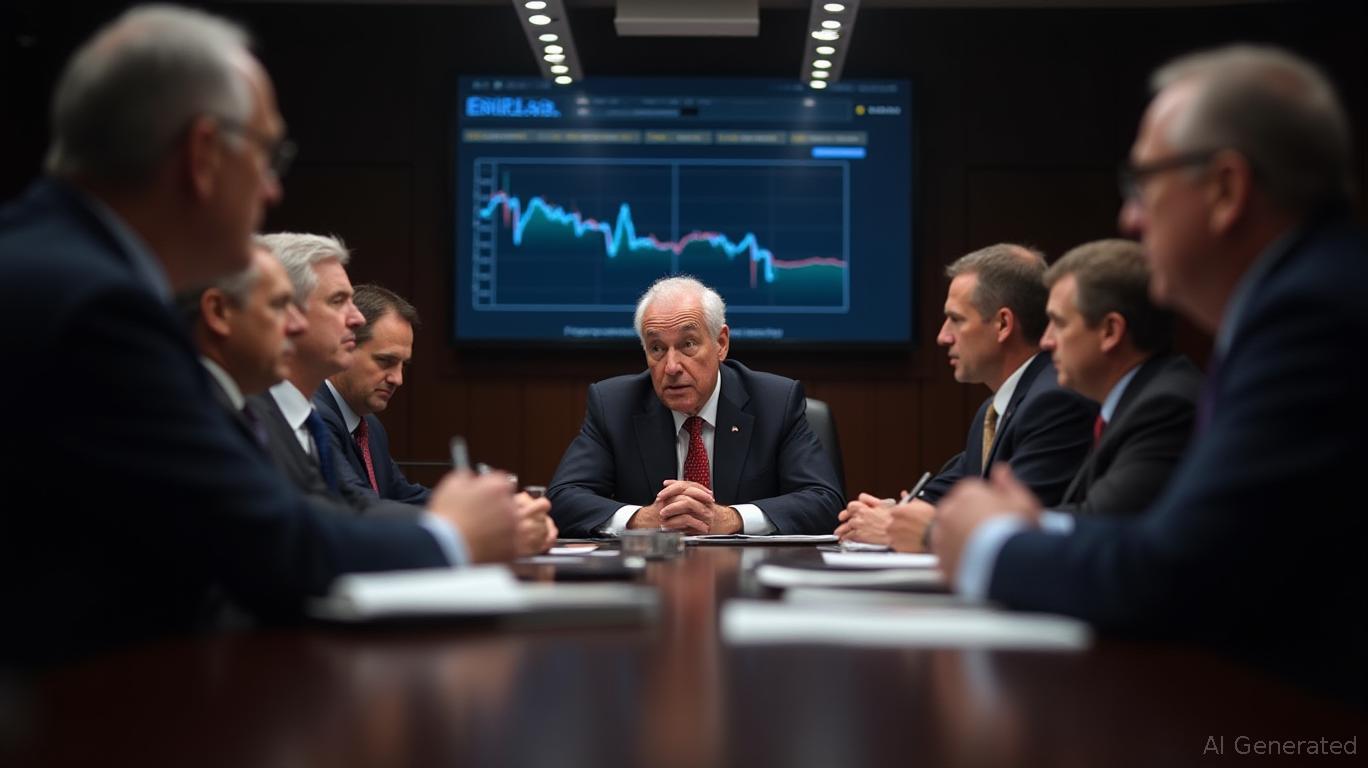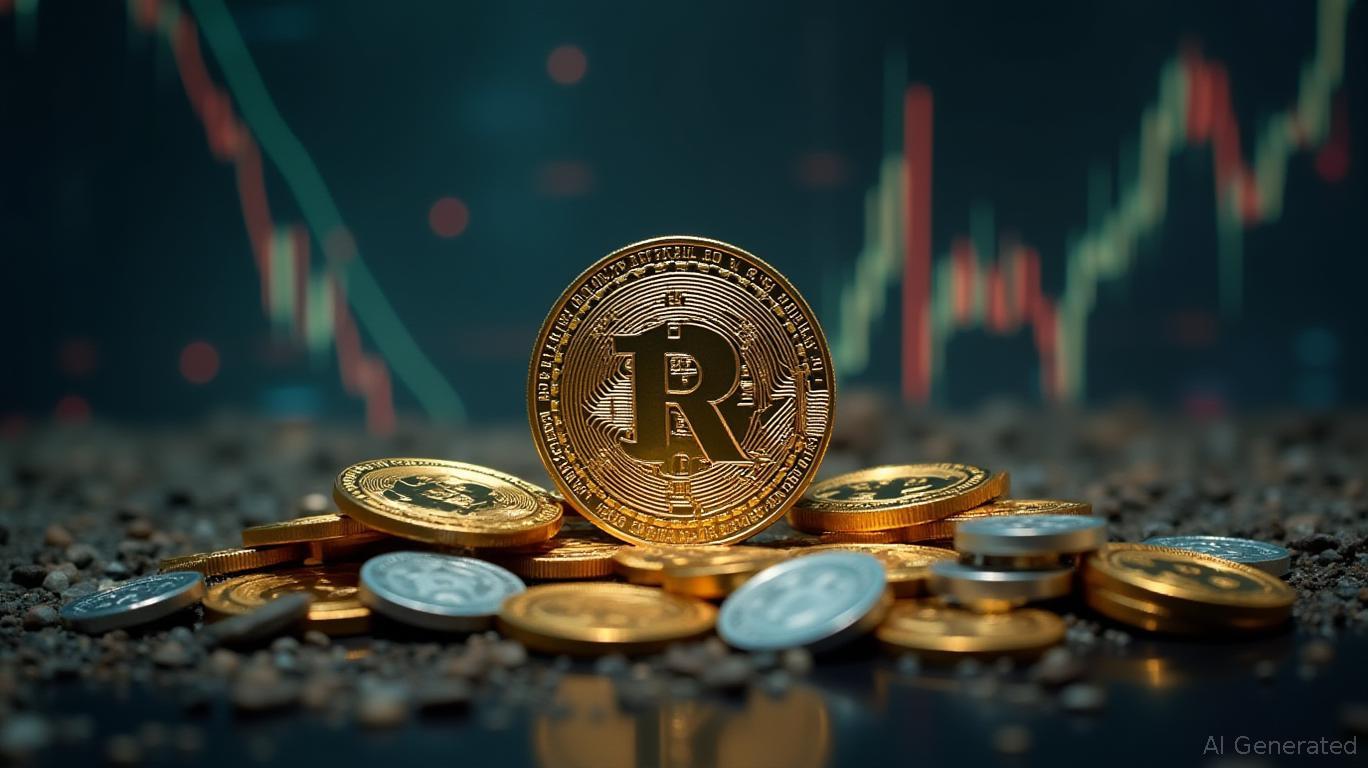Stubborn Inflation and Tightening Liquidity Prompt Fed to Reverse Course on Policy
- Fed to cut rates by 0.25% and pause QT, reversing two-year liquidity-draining strategy amid labor market fragility and stagflation risks. - 5-week government shutdown slashes 0.2% weekly GDP growth, exacerbating labor market strain and corporate balance sheet adjustments. - Intel and Eversource Energy restructure finances through debt reduction and asset sales amid macroeconomic uncertainty. - Fed's QT halt aims to prevent reserve scarcity as repo rates rise, with potential balance sheet expansion planne
This week, the Federal Reserve is expected to unveil a major change in its monetary policy, with plans to lower short-term interest rates by 0.25 percentage points and bring its balance sheet reduction—known as quantitative tightening (QT)—to a stop. Fed Chair Jay Powell outlined this policy shift in his October 14 address, signaling an end to the central bank’s two-year campaign to withdraw liquidity from the financial system. At least one dissent is anticipated from newly appointed Governor Stephen Miran, who has pushed for deeper rate cuts due to worries about a softening job market and persistent inflation threats, according to
This policy adjustment comes as the ongoing government shutdown continues to drag on economic growth, reducing real GDP by about 0.2% each week and intensifying concerns about a drawn-out slowdown. Now in its fifth week, the shutdown has left 750,000 federal employees without pay and disrupted hiring at state and local levels, adding to the strain on a labor market already showing signs of weakness. The Fed’s October Beige Book pointed to “stagflationary” trends, such as persistent inflation in services and “opportunistic pricing” by companies, fueled by less competition and higher tariffs, as highlighted in KPMG’s report.

The move to end QT also stems from rising worries about liquidity in the overnight fed funds market, where reserves are shrinking as balance sheet reduction nears its end.
Companies are also adjusting their finances. Intel, under new CEO Lip-Bu Tan, has focused on cutting debt and increasing operational flexibility, supported by $8.9 billion in government funding and a $5 billion investment from Nvidia. The company’s CFO stressed a cautious approach to capital expenditures, in line with Tan’s strategy of “waiting for demand before investing,”
The Fed’s decision to cut rates and pause QT comes just before the release of key inflation data, including the September CPI report, which showed inflation rising less than expected. While this gives the Fed more room to focus on supporting jobs, experts warn that rate reductions alone may not be enough to counteract the negative effects of the shutdown and tariffs. The October 24 economic calendar on includes important data points like core CPI and manufacturing PMI, which could influence the Fed’s ultimate policy choices.
With early signs of stress in the repo market and companies adapting to changing economic conditions, the Fed’s actions indicate a shift toward supporting growth while keeping inflation in check. As markets prepare for a record $31 billion in
Disclaimer: The content of this article solely reflects the author's opinion and does not represent the platform in any capacity. This article is not intended to serve as a reference for making investment decisions.
You may also like
OpenAI's Shift to Profit: Will Nonprofit Governance Endure with Microsoft's $135B Investment?
- OpenAI completes for-profit restructuring, granting Microsoft a 27% stake valued at $135B while retaining nonprofit oversight via a $130B equity stake. - Microsoft secures extended IP rights to OpenAI models until 2030 or AGI verification, but loses exclusivity on consumer hardware and cloud infrastructure. - The deal includes $250B in Azure cloud purchases by OpenAI and resolves legal disputes, including Elon Musk's $100B acquisition bid and regulatory objections. - Critics question the nonprofit founda

Blazpay Presale Nears Its End: Investors Hurry to Secure Lower Prices Before Increase
- Blazpay's presale nears completion after raising $843.7K, with 76.1% of 157.3M tokens sold at $0.0075, ahead of a $0.009375 price increase in under a week. - The platform combines multichain trading (50+ blockchains), AI tools, and gamified rewards, attracting 800K+ users and 3M transactions with $200K in distributed rewards. - Tokenomics allocate 34% for public sales, 12% for team/advisory, and 16% for liquidity, with analysts projecting $0.011–$0.017 presale prices and $0.05–$0.09 post-listing. - Quill

Senate Stalemate: GOP Pushes to Resume Government Operations as Democrats Insist on Extending ACA Subsidies
- The U.S. government shutdown entered its 24th day as the Senate rejected a 13th funding bill, closing nonessential agencies and disrupting critical services. - Democrats demand extended ACA subsidies before supporting any bill, while Republicans insist on reopening the government first, deepening partisan gridlock. - Transportation delays and unpaid military salaries highlight growing impacts, with the Pentagon accepting a $130M donation to cover part of defense costs. - SNAP benefits face November freez

XRP News Today: Evernorth’s Approach to Reinvesting XRP Builds $1B Treasury, Enhancing Trust Among Institutions
- Evernorth Holdings, backed by Ripple, surpassed $1B in XRP treasury value, boosting institutional confidence and pushing XRP prices up 4%. - The firm received 530M XRP from Ripple and 50M from CEO Chris Larsen, using DeFi protocols to reinvest gains into further token purchases. - Evernorth plans a Nasdaq listing (XRPN) via SPAC merger, with 95% of its $1B funding target secured and regulatory clarity in the U.S. driving adoption. - Despite SEC delays on XRP ETFs, institutional demand grows as Evernorth'
